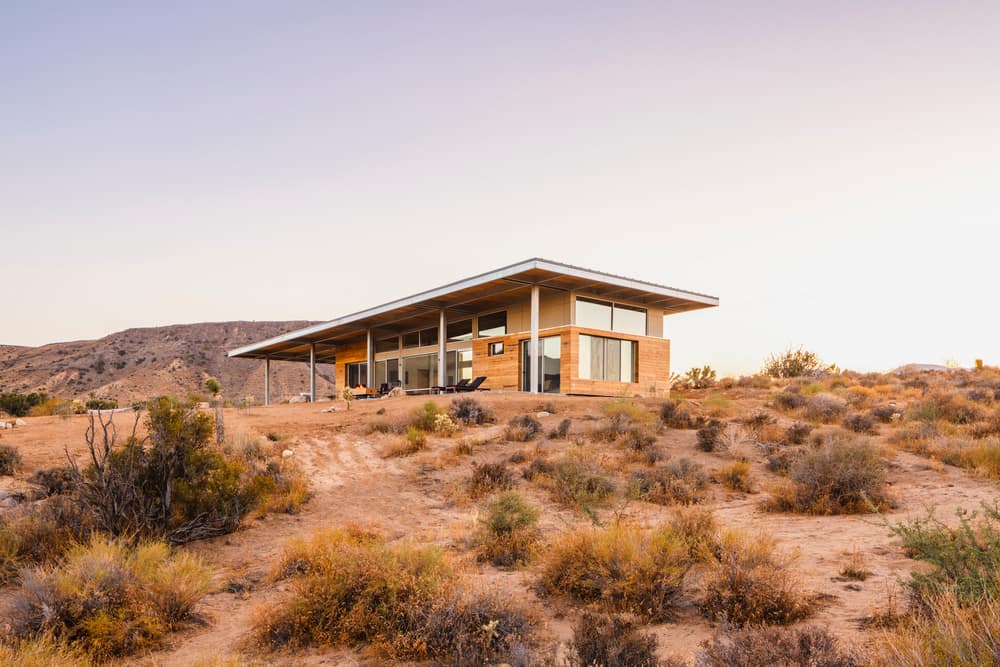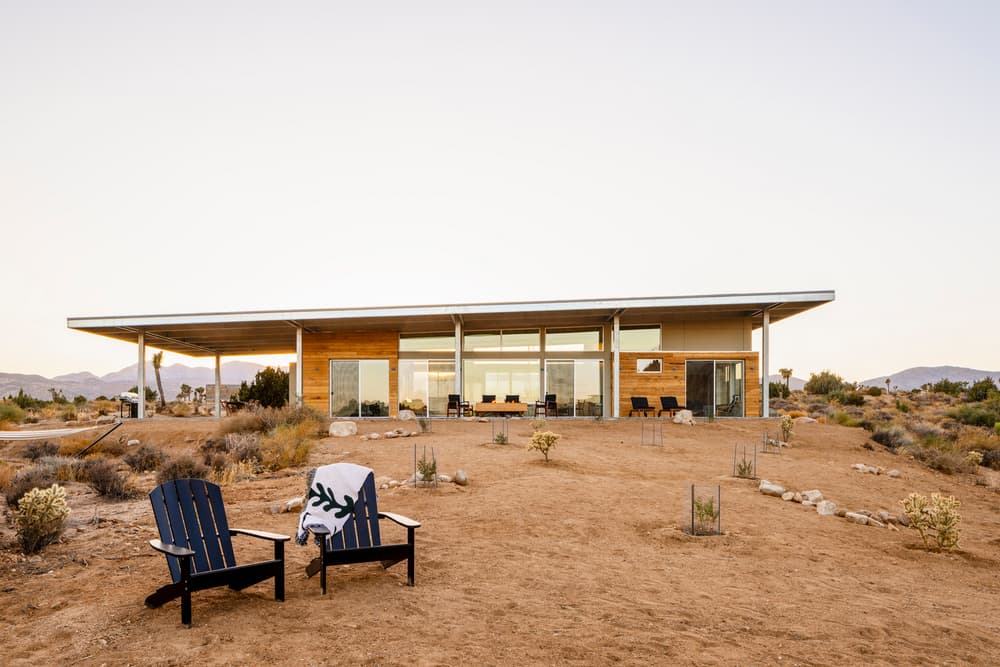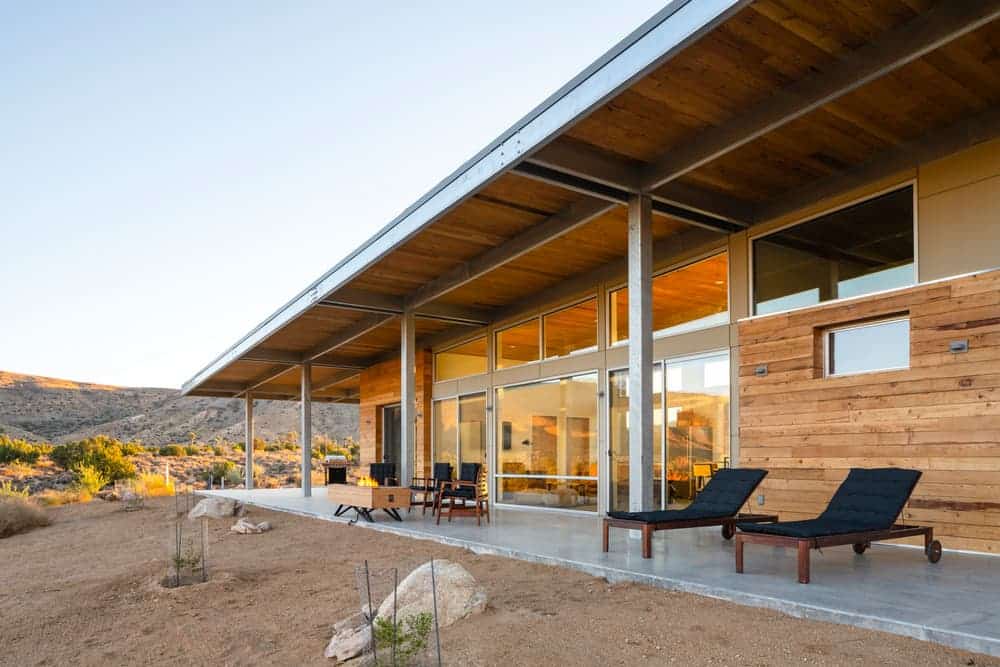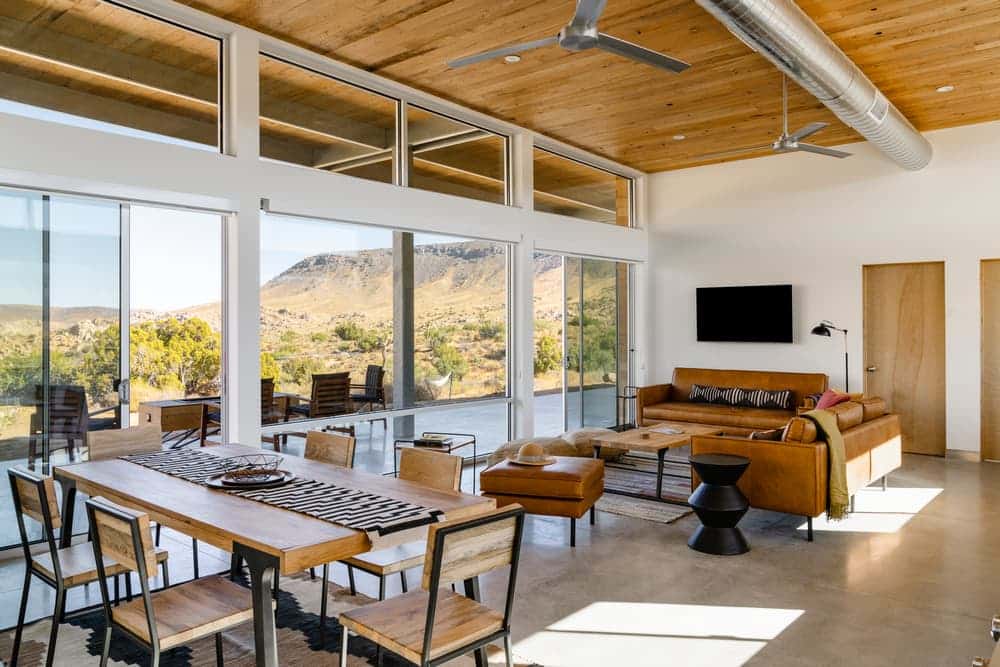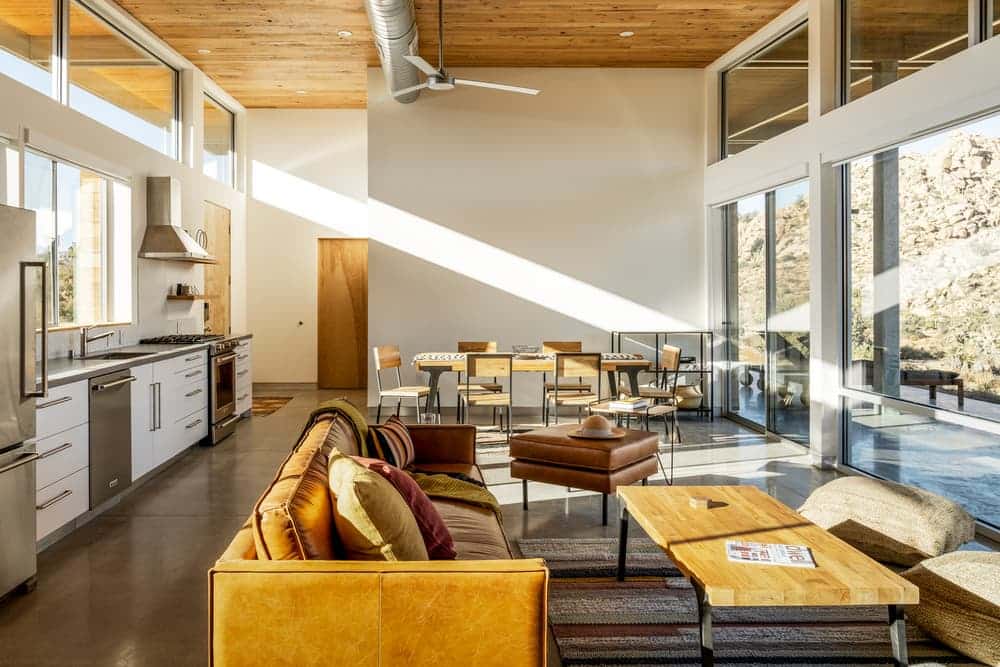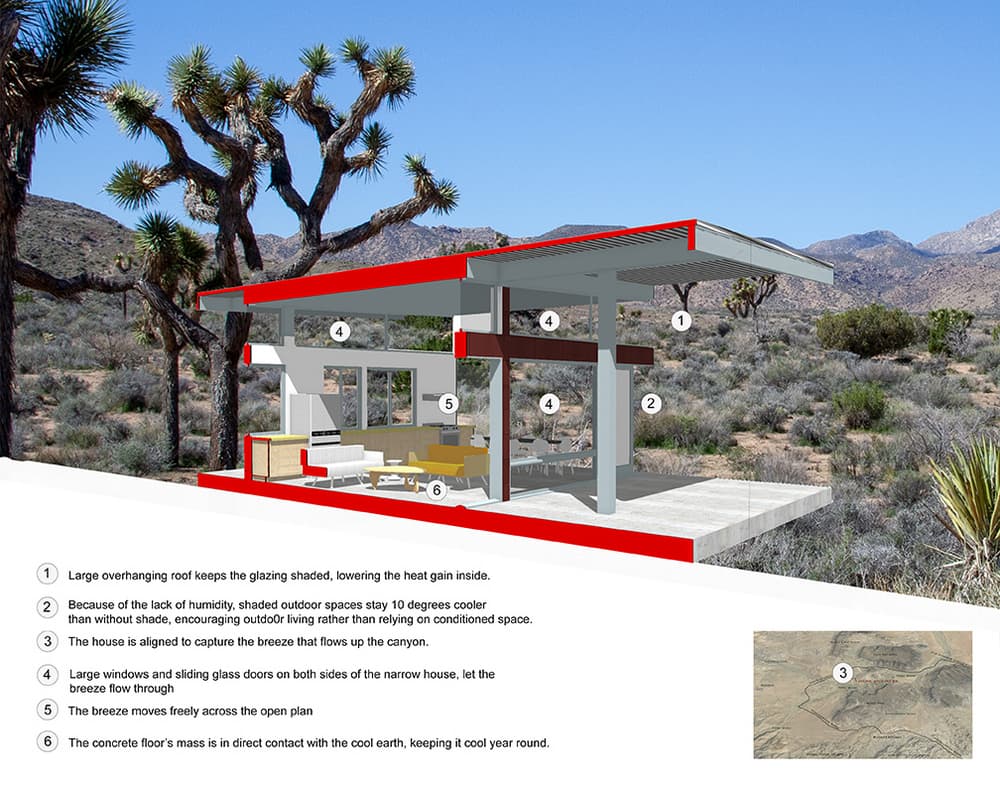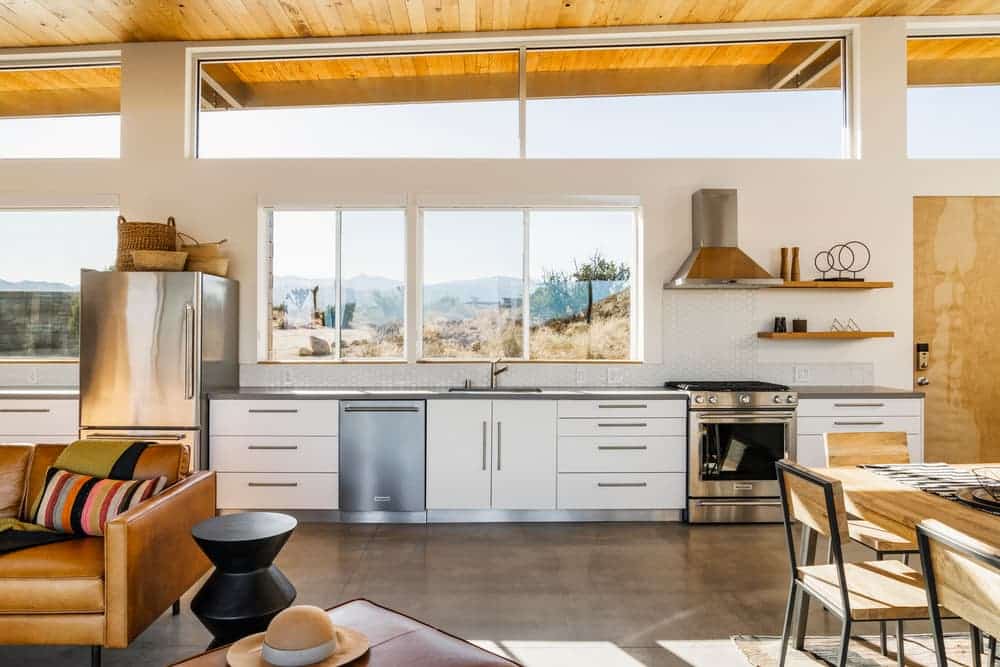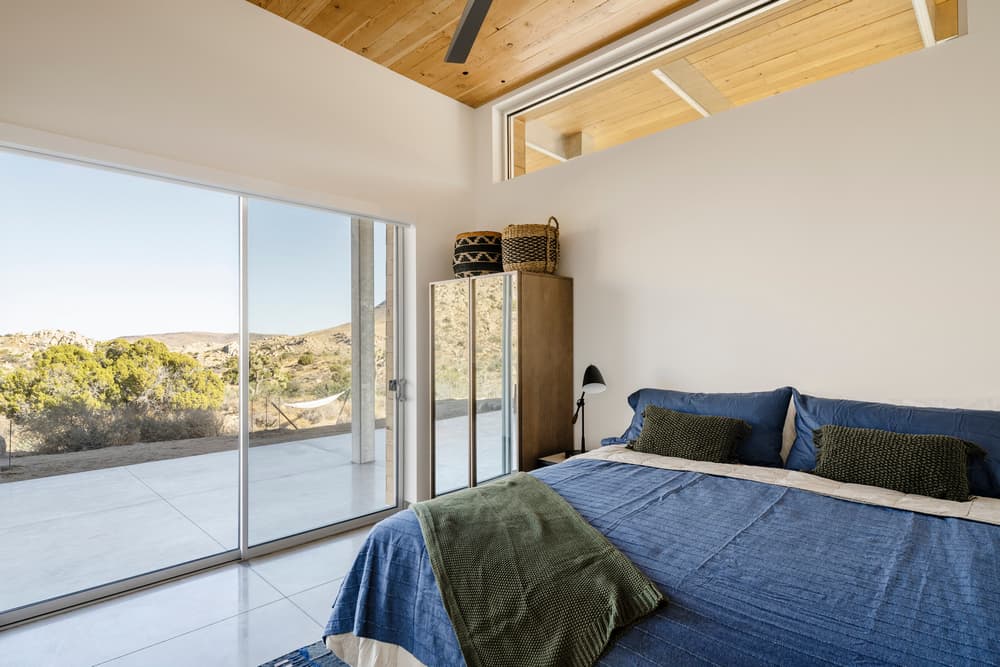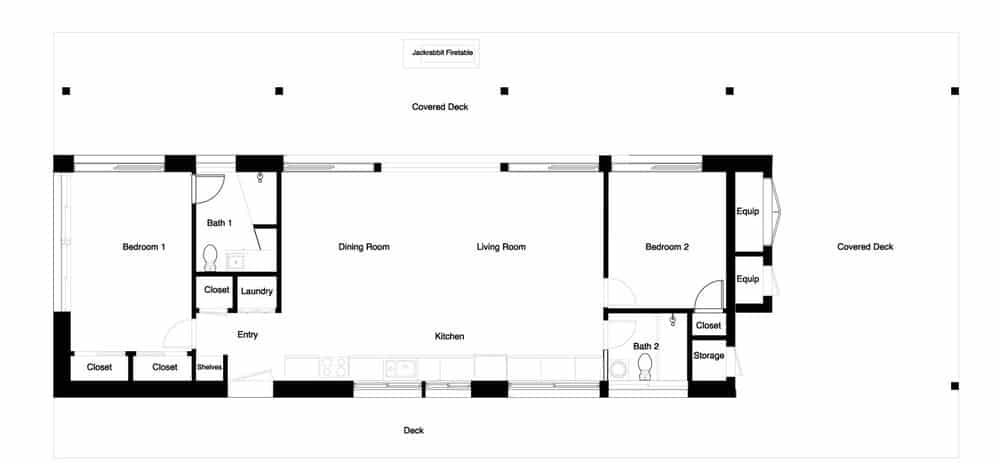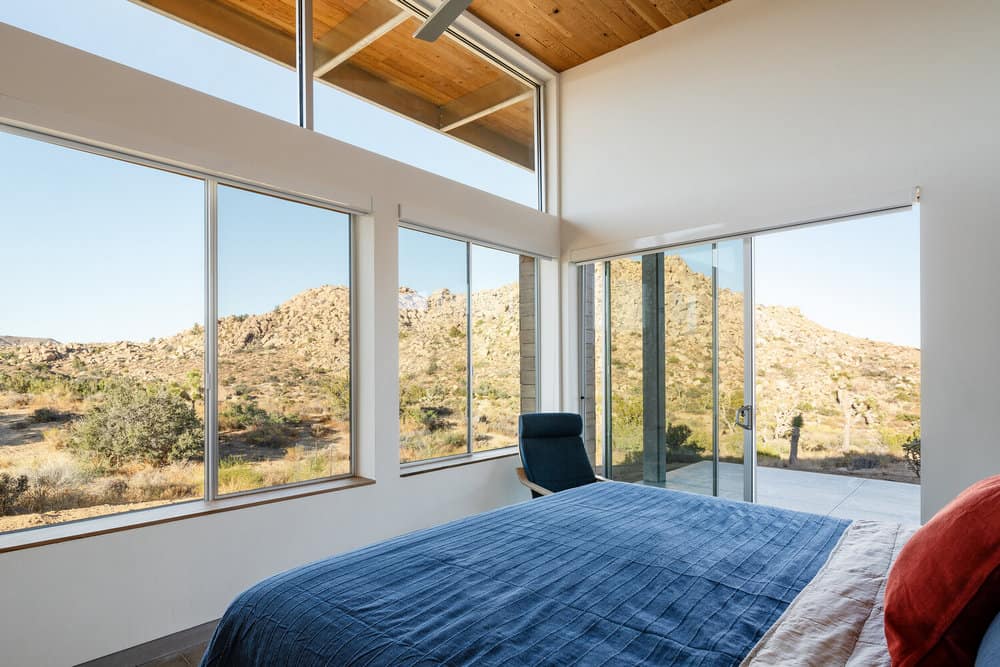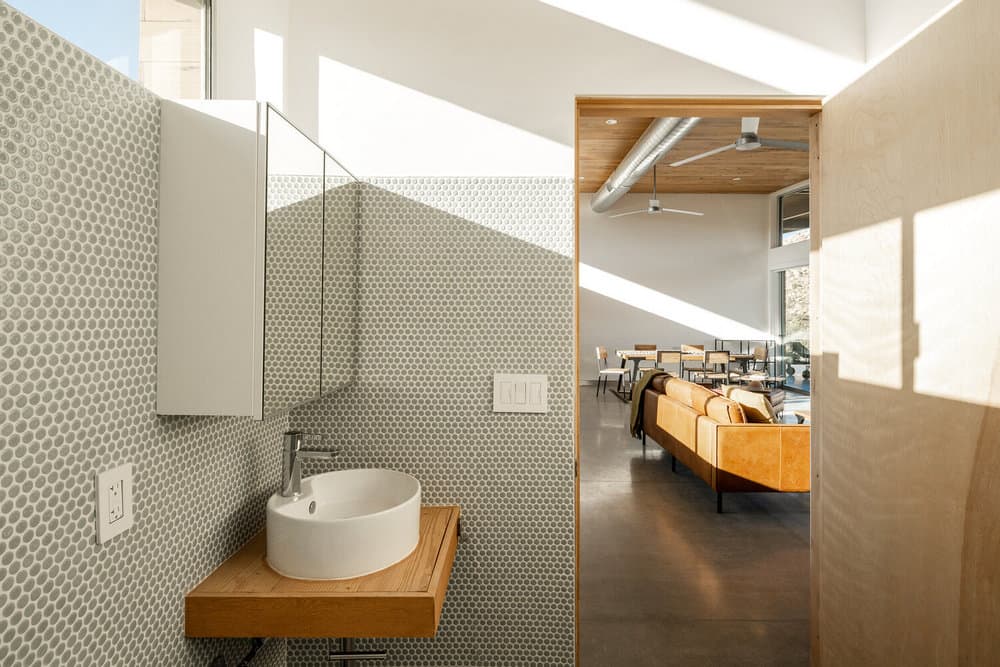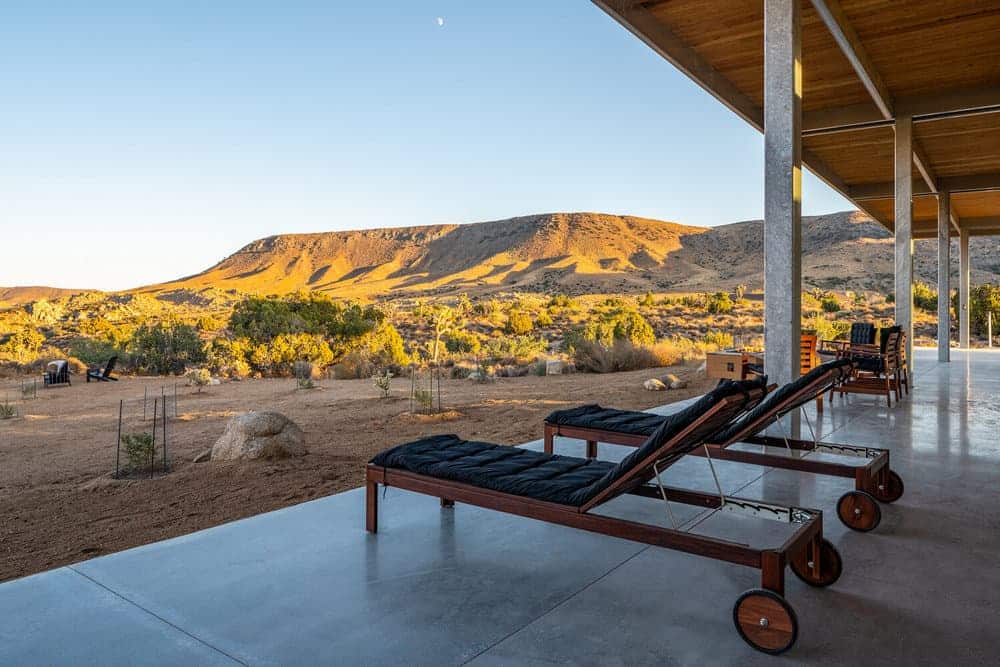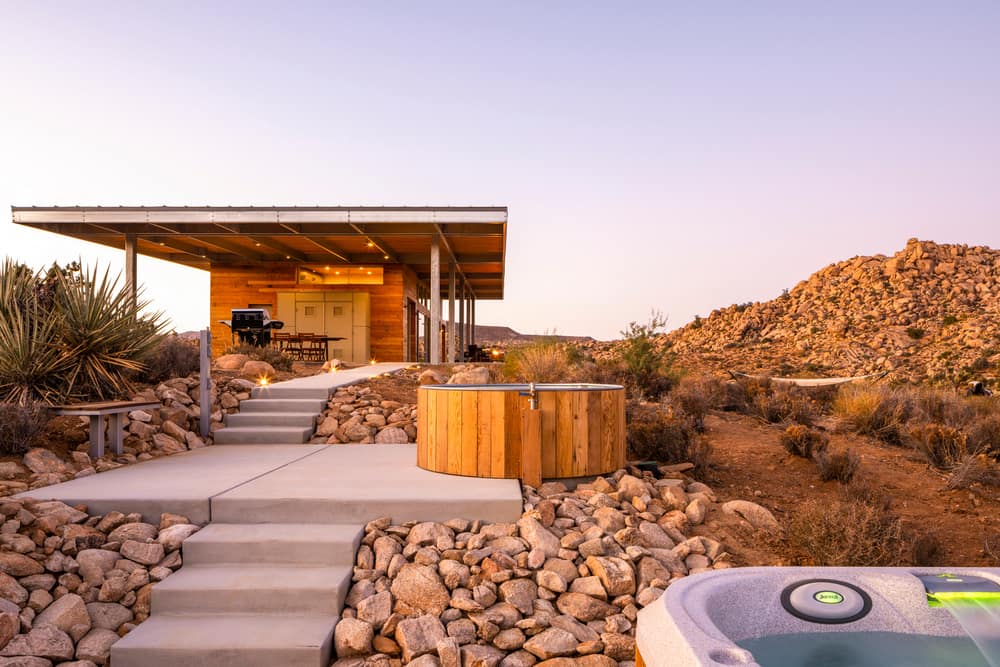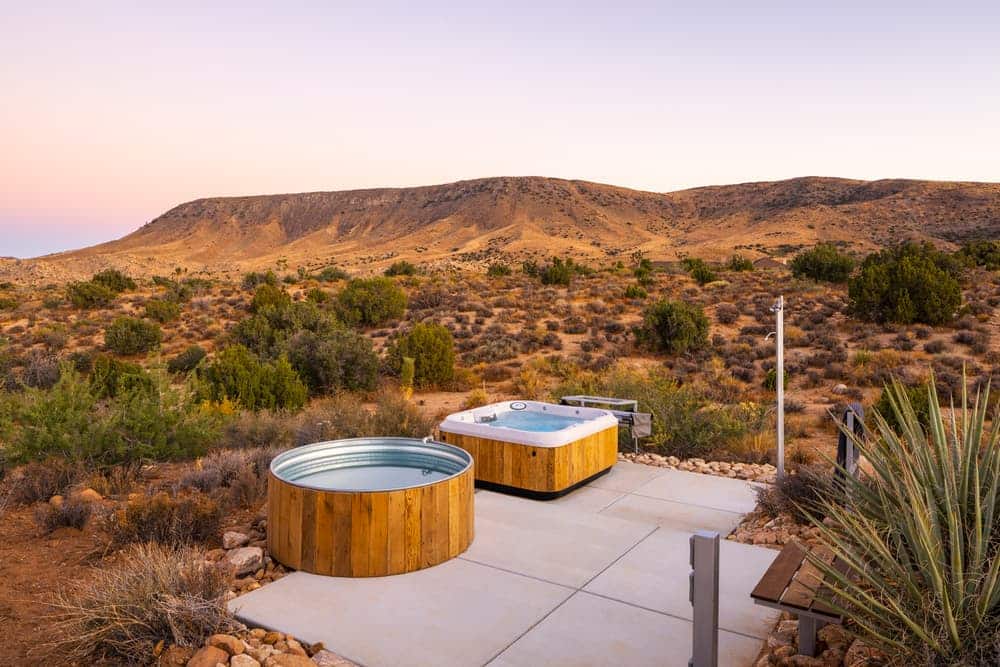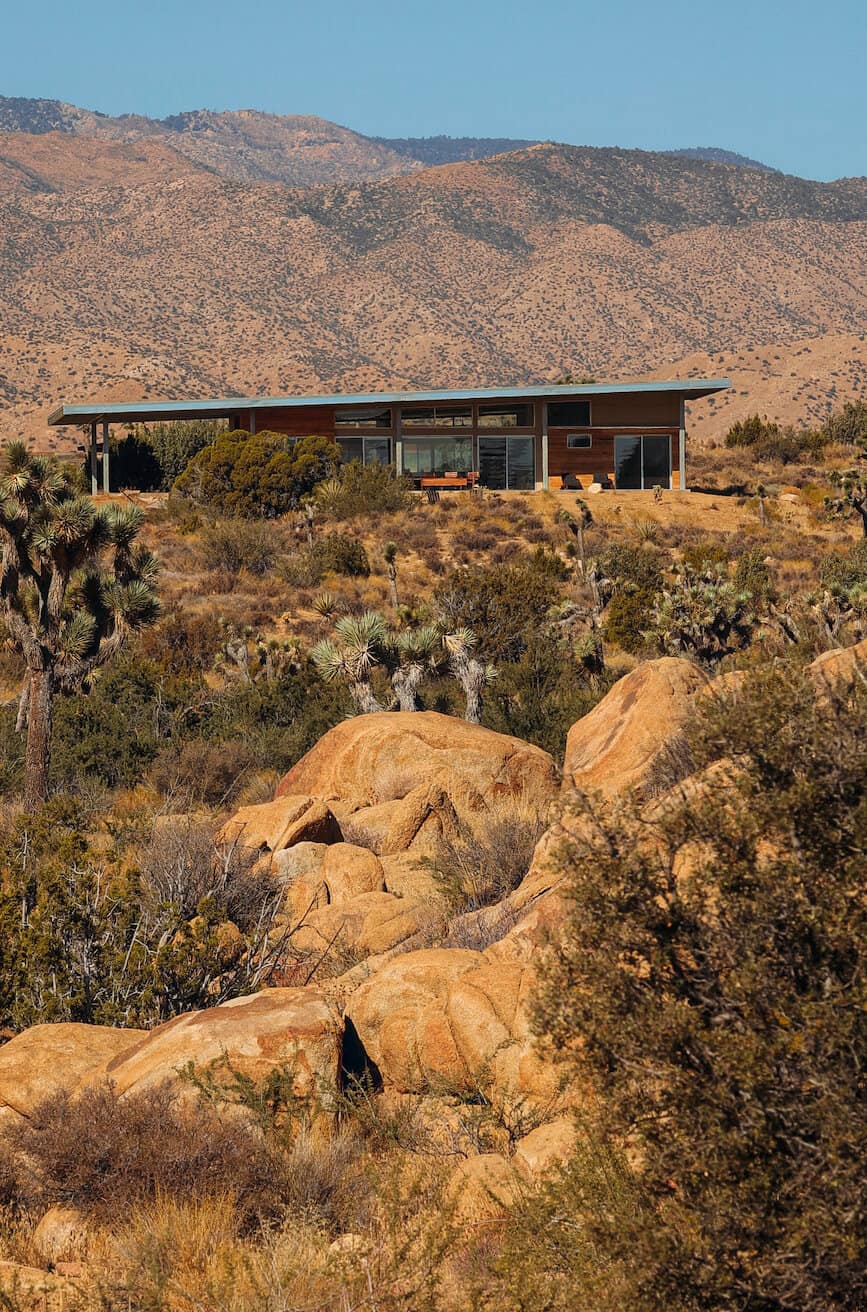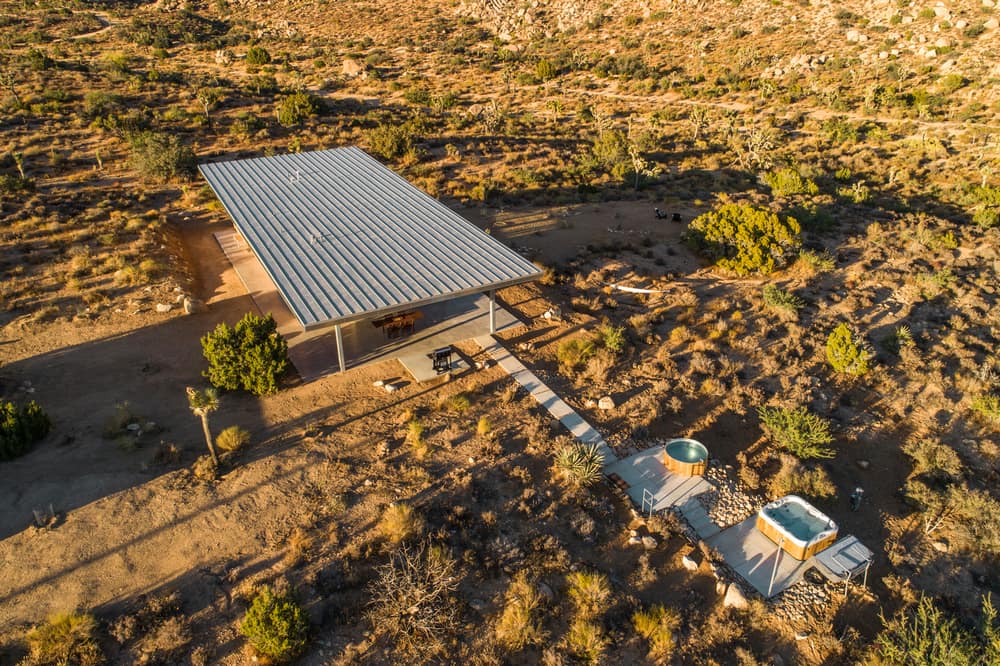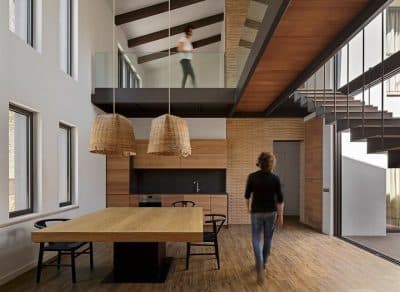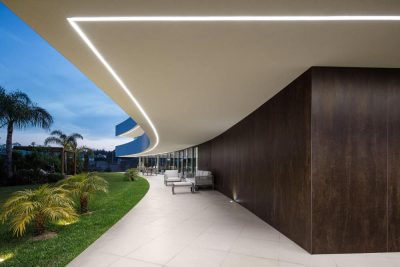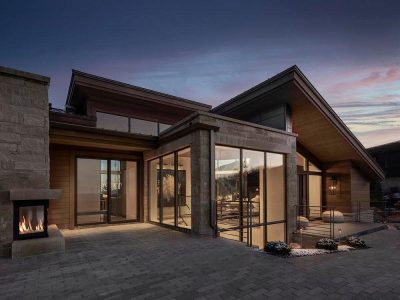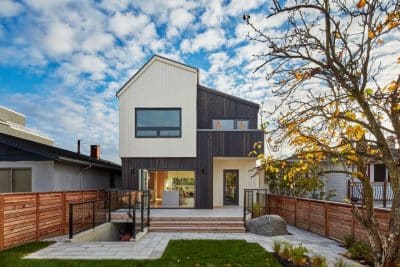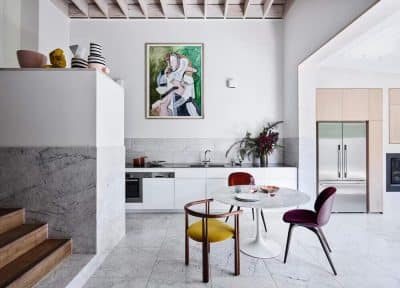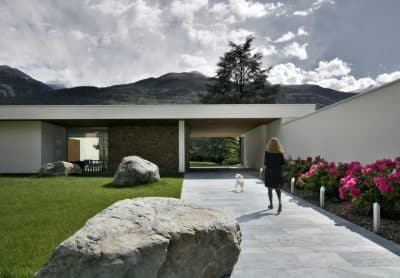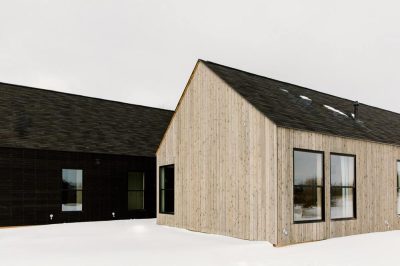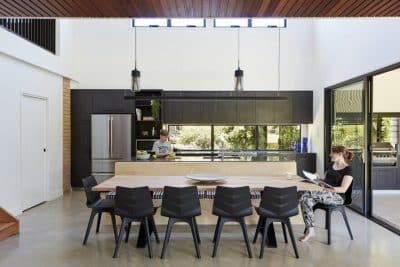Project: Cowboy Modern Desert Eco-Retreat
Architects: Jeremy Levine Design
Associate Architect : Jonathon Pickup, Diego Rodrigo
General Contractor: D&D Construction
Civil Engineer: Insight Surveying
Structural Engineer: Dave Poland Engineering
Landscape Contractor: Mother Nature
Location: Pioneertown, California, United States
Area: 112 m²
Year: 2020
Photo Credits: Lance Gerber
Inspired by Pioneertown’s Old West architecture and the stark desert landscape, this new 1,200-square-foot, two-bedroom, two-bath home was designed as a family getaway dubbed Cowboy Modern Desert Eco-Retreat. Sustainable living and serene connection to nature directed the design choices—namely, siting the building for natural breezes and light through large glass windows and doors, orienting the house to minimize solar heat gain, building lightly on the land to ensure construction would not harm the fragile environment, and using locally reclaimed weathered lumber for all interior and exterior wood.
The aim was to build lightly on the land, especially given that the site is in a zone that receives special Resource Conservation Protection. Requirements included a biologist inspection to ensure that no desert tortoises or owls would be affected by construction. In order to minimize disturbance to the desert’s delicate ecosystem, the house’s structure is designed with a zero-waste system; the light steel columns and beams were manufactured off-site, then bolted together during construction in a matter of days rather than months. This system for the house’s exposed steel framing was also inspired by simple metal structures on local horse ranches.
The standing-seam metal roof features a reflective coating to withstand high winds. The deep roof overhangs shade the house during the day and form a wrap-around porch on three sides. Basically equal to the square footage of the interior, the 1,000 square feet of outdoor space gives the family room for outdoor grilling, dining, and lounging.
A stepped path leads to a hot spa and a cold cowboy tub, a nod to the Old West tradition of re-purposing galvanized livestock troughs as bathtubs. Passive sustainability strategies are utilized to minimize the impact on the natural landscape. All gray water from the sinks, showers, and washing machine is recycled for irrigation.
Inside, the home features polished concrete floors, clean white walls, and exposed metal ducts. Large-paned windows frame desert views and admit an abundance of daylight. The kitchen lines one wall of the open-concept great room, which is bookended by a bedroom and bathroom on each side.
The main living space is kept free of walls and any other barriers to allow wind to passively ventilate the house. At an altitude of 4,800 feet, this part of the desert experiences extreme weather conditions. Therefore, the choices of materials and details were critical to the building’s performance. Steel for the frame, unlike wood, does not expand and contract significantly as the temperature changes.
All lumber—exterior and interior—comes from Southern California demolition sites. The placement and orientation of the house capture the natural breezes that flow through the canyon and minimize solar heat gain.
The moisture content of reclaimed lumber is minimal and its durability is superior to new lumber, which expands and contracts under extreme heat and cold. A clear sealant was applied to augment the wood’s weather resistance.
Furnishings play into the Old West-meets-modern theme. In the living area are a camel leather sofa and ottoman as well as rustic wood coffee and dining tables. Outdoor furniture is made of wood with black upholstered cushions. Jeremy Levine Design conceived of the “jackrabbit” fire table that takes inspiration from local fauna and is made from leftover home-construction materials. The primary bath encapsulates the melding of sustainability, cowboys, and modernism. Its vanity is reclaimed lumber, referencing local saloons’ distressed-wood bars and tables. The Cowboy Modern Desert Eco-Retreat is a place of respite for a young family and friends, where they can enjoy open views and an unpolluted night sky.

